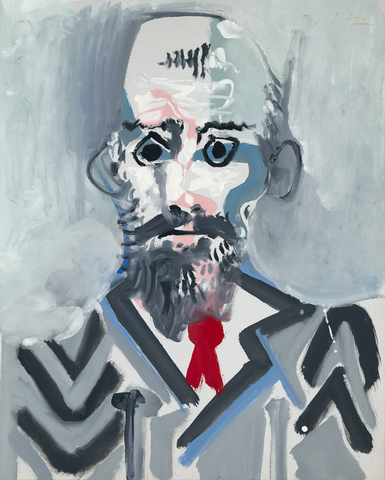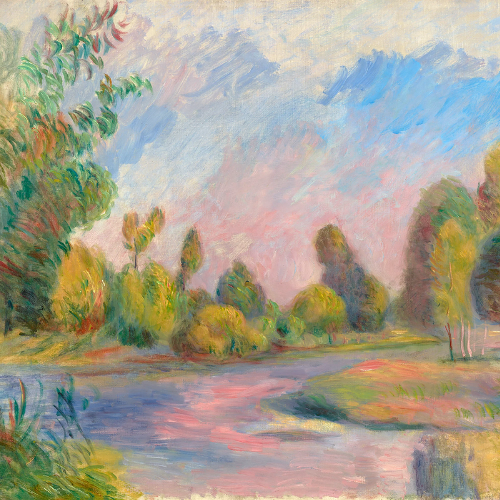Baroque Definition: Italian Beginnings
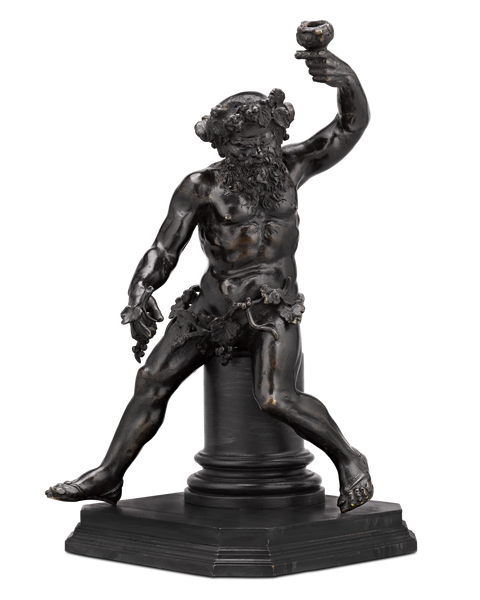
Flemish Baroque Bronze Bacchus. 1670. M.S. Rau.
The Italian Baroque movement emerged as a direct response to the Protestant Reformation, a time when the authority and legitimacy of the Catholic Church were increasingly questioned. This period of religious and cultural upheaval prompted Catholic orders to seek ways to inspire a renewed sense of awe within their communities.
An important aspect of this quest was manifested in the architectural design of churches, the central gathering places for the faithful. Notably, the Church of the Gesù, with its façade by Giacomo della Porta (consecrated in 1584), and the façade and colonnade of St. Peter's Basilica by Carlo Maderno (completed in 1612), marked a decisive departure from the austere Gothic architecture of the late medieval period and Renaissance.
These structures replaced stone walls with emotive monumental artworks and simple facades with soaring, intricate designs featuring classical details such as acanthus leaves and ornate columns.
These architectural innovations signaled a significant shift that would come to define the Baroque movement. Spanning from 1600 to 1750, this aesthetic sensation made its mark across the Western world, renowned for its cultivation of high drama and extravagant details. This era is characterized by an emphasis on emotion, movement and the use of strong contrasts of light and shadow to create astonishing volume in painting, sculpture and architecture.
Keep reading to learn how to recognize these distinctive features in art, furniture and decor. The dynamic appeal of the Baroque, with its richly layered and emotive qualities, is more pervasive in our cultural heritage than one might initially perceive.
Baroque Artwork: Caravaggio’s Influence
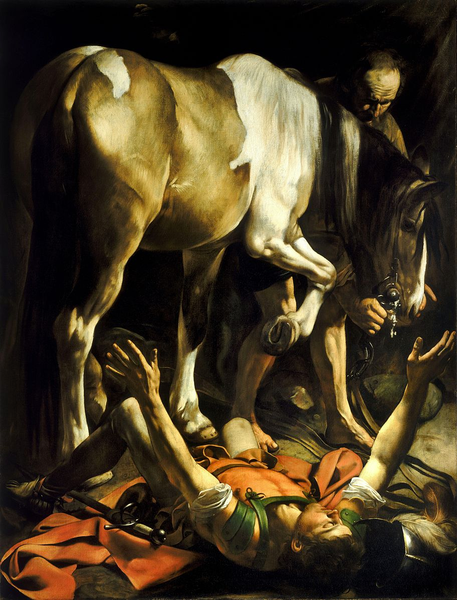
Conversion on the Road to Damascus by Caravaggio. Circa 1600. Source.
By design, the church of Santa Maria del Popolo in Rome is the first major church encountered by historic and contemporary travelers, built to welcome visitors into the city. Within the walls of this monumental church are several iconic works by the artist who best embodies the baroque movement, both in his oeuvre and also with his life—Caravaggio. The Cerasi Chapel in this church features two Caravaggio masterpieces: The Conversion on the Road to Damascus and The Crucifixion of Saint Peter, the most important works of art in the church and unrivaled high points of Western art history.
Caravaggio’s Conversion on the Road to Damascus captures a pivotal moment from the bible, when Saul, later called Paul, converts to Christianity. Caravaggio takes creative liberties that made this painting highly controversial, both at the time of its conception and into the 20th century. Notably, Saul is depicted falling from a horse, an element not mentioned in the biblical account. Beyond this factual diversion, Caravaggio also implements a dramatic and mysterious atmosphere for emotive effect that diverges from the original story.
In this painting, Saul experiences intense religious ecstasy, lying supine on the ground, eyes closed, arms raised and dressed in a Renaissance interpretation of a Roman soldier's attire. His plumed helmet and sword lie beside him, under the watchful eye of an old groom who calms the horse and prevents it from stepping on Saul. The horse, detailed with a brown and cream coat, foams at the mouth, its hoof suspended in mid-air. The scene, primarily engulfed in darkness, is illuminated by a strong, ethereal light, hinting at the divine presence.
This work stands as a highly evocative example of Baroque artwork at its finest: hyper-realistic, dramatic and stirring. Caravaggio is famous for epitomizing the Baroque movement not only through his art but also through his tumultuous life. Known for his fiery temper and unconventional lifestyle, he often found himself in conflict with the law and involved in violent brawls. In fact, Caravaggio spent a significant part of his life on the run.
In 1606, after killing a man in a skirmish in Rome over a tennis match dispute, he fled to avoid the death sentence. His time as a fugitive took him to Naples, Malta and Sicily, among other places. Unruly until his last day, even Caravaggio's death in 1610 remains a subject of speculation. It was long believed he died of fever, but recent theories suggest lead poisoning from his paints or even murder as possible causes.
How to Identify Baroque Artwork
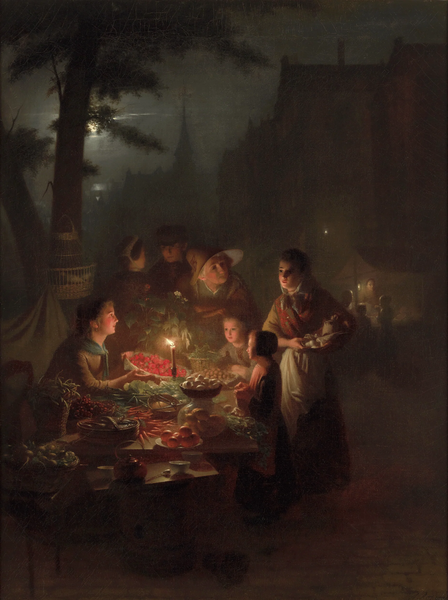
Abundance by Johannes Rosierse. 19th century. M.S. Rau.
Not constrained to the 17th and 18th centuries, the tenets of Baroque artwork remain alive in art of ensuing centuries. Caravaggio's dramatic use of light and shadow has influenced not just painters but also filmmakers, with directors like Derek Jarman and Martin Scorsese citing him as an inspiration for their visual styles. Here are some easy characteristics to help you identify Baroque art:
Dramatic Use of Light and Shadow: Baroque artists like Caravaggio employed a heightened version of chiaroscuro called tenebrism, a technique that uses a stark contrast between bright light and dark shadows to create a hyper-realistic sense of depth. The word stems from the Italian tenebroso, meaning dark and gloomy, and adds a dramatic flair to Baroque compositions.
Intense Emotion: Artworks from this period often depict scenes charged with emotion, aiming to evoke a visceral response from the viewer.
Rich, Deep Color: Baroque paintings are known for their use of rich and vibrant colors, enhancing the visual impact of the scenes depicted.
Dynamic Movement: Unlike the static and balanced compositions of the Renaissance, Baroque art often features dynamic and fluid movement, with figures that seem to extend beyond the canvas.
Realism and Attention to Detail: Baroque artists strived for realism, paying close attention to details of texture, light quality and human anatomy to create lifelike representations.
Grandeur and Splendor: Baroque art is characterized by its grandiose and ornate qualities, aiming to impress and overwhelm the senses with its splendor.
Religious Themes and Symbolism: Many Baroque artworks were commissioned by the Church and feature religious themes intended to convey spiritual messages and evoke devotion.
Baroque Furniture
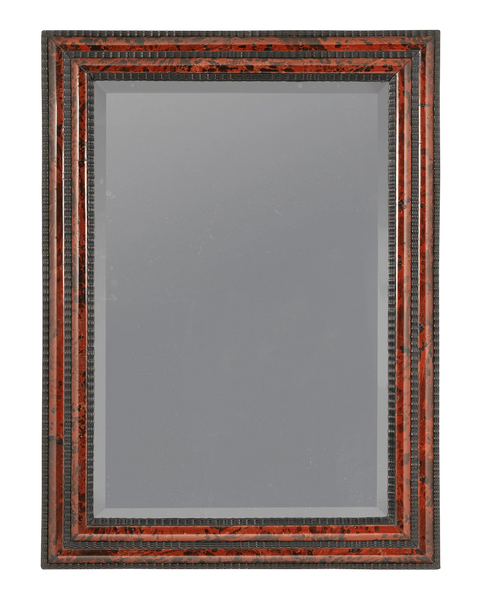
Flemish Baroque Tortoiseshell Mirror. Circa 1680. M.S. Rau.
The Baroque movement's influence permeated beyond the realm of visual arts, significantly impacting the furniture design of the era. This period saw a surge in the demand for furniture that mirrored the grandeur and opulence characteristic of Baroque art, further fueled by Europe's expanding trade networks with the East. This trade introduced Europe to exotic textiles and finishes previously unseen, enriching the material palette of Baroque furniture makers.
The furniture of this period was distinguished by its majestic and regal aesthetic. Pieces were typically large, perfectly symmetrical, lavishly adorned with gilt bronze decorations and often featured the intricate inlay technique known as marquetry, which lent an additional layer of sophistication. Decorative elements frequently included motifs of foliage, cherubs, family crests and monograms.
The style was also characterized by high contrasts in color and texture, bold ornamentation and dynamic forms, mirroring the dramatic intensity and meticulous detail found in Baroque art and architecture. Each element of design was carefully considered to contribute to the overall visual harmony of the piece.
The era also saw the emergence and popularization of specific furniture types that continue to be staples in contemporary interiors. This includes commodes or chests of drawers, writing desks, and four-poster beds, which became more widely used during this time. Seating was often heavily upholstered, serving both aesthetic and practical purposes.
The advancements in glassmaking technology also made mirrors more accessible, culminating in the creation of grand mirrors for spaces such as the Hall of Mirrors at Versailles, showcasing the pinnacle of Baroque opulence and craftsmanship in furnishings.
How to Identify Baroque Furniture

French Provincial Double Door Armoire. 18th century. M.S. Rau.
The Palace of Versailles. St. Peter’s Basilica. St. Paul’s Cathedral. All of these famous buildings house some of the finest paragons of Baroque furniture. This iconic style extends far beyond the halls of these famous interiors. Here's a brief overview of the key characteristics that define Baroque furniture:
Ornate Detailing: Baroque furniture is renowned for its elaborate and intricate designs. Carvings of leaves, flowers, fruits and cherubs are common.
Bold Proportions: Furniture from this era often features bold and grand proportions. Pieces were designed to make a statement, with large-scale constructions that command attention in any space.
Gilt Accents: The use of gold leaf and gilt-bronze mounts is a hallmark of Baroque furniture, adding a luxurious and radiant finish.
Rich Materials: Baroque pieces are crafted from high-quality, rich materials such as walnut, oak and ebony. These were often inlaid with precious metals or stones and upholstered with sumptuous fabrics like silk and velvet.
Dramatic Curves: Unlike the straight lines and symmetry of Renaissance furniture, Baroque pieces embrace curves. C-scrolls, S-curves and intricate legs add a dynamic and fluid flourish.
Emphasis on Comfort: Baroque furniture also prioritizes comfort, with plush upholstery and generous padding becoming more common, reflecting the era's broader focus on personal luxury and opulence.
Classical Motifs: The designs often incorporate symbolic motifs such as eagles, lions and mythical creatures that reflected the power and prestige of the furniture's owners.
Marquetry and Inlay Work: Exquisite marquetry and inlay work, using contrasting woods or materials, create detailed patterns and scenes on the surfaces of cabinets, desks and tables, showcasing the exceptional craftsmanship of the time.
Lasting Impact of the Baroque Movement
